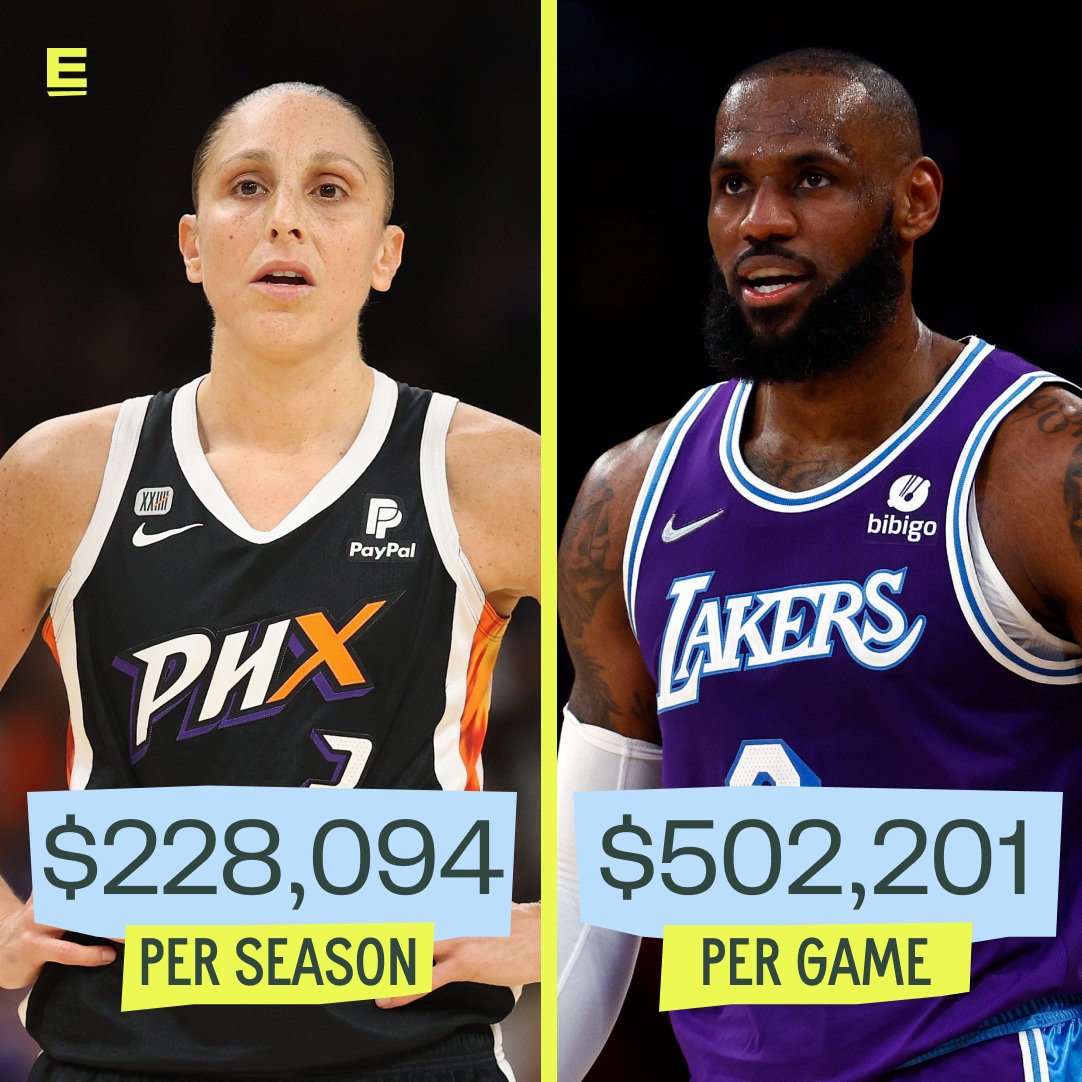
The disparity in earnings between WNBA and NBA players has been a longstanding issue sparking debates and frustrations within the basketball community. The primary reason behind this pay gap stems from the vast difference in revenue generation between the two leagues. The NBA boasts a global presence with massive revenues driven by widespread popularity and lucrative television contracts. Conversely, the WNBA struggles to match such financial prowess, resulting in considerably lower earnings for its players.
Revenue Disparity:
The NBA operates as a multi-billion dollar industry, enjoying widespread appeal and commanding substantial financial investments. In contrast, the WNBA faces challenges in generating comparable revenue due to a smaller fan base and limited media coverage. Consequently, the financial resources available for player compensation are significantly diminished.
Attendance and Viewership:
Another contributing factor to the earnings gap lies in attendance and viewership figures. While NBA games regularly attract large crowds and enjoy extensive television coverage, WNBA matches often suffer from low attendance and limited airtime. This discrepancy in interest directly impacts revenue streams and subsequently influences player salaries.
Gender Bias:

Potential Solutions:
Addressing the pay gap requires concerted efforts from various stakeholders. The WNBA could focus on enhancing revenue streams by investing in marketing initiatives, improving game quality, and cultivating a more dedicated fan base. Negotiating more favorable terms with sponsors and partners could also bolster financial resources for player compensation. Additionally, advocating for equitable treatment and challenging gender biases within the sports industry are essential steps toward fostering a fairer playing field for women’s professional basketball.
In summary, bridging the pay gap between the WNBA and NBA necessitates comprehensive strategies aimed at bolstering revenue, challenging gender biases, and advocating for equitable treatment of female athletes. Through collaborative efforts, a more equitable future for women’s basketball can be realized.
News
Mark Wahlberg demands the firing of teachers who remove American flags from classrooms, saying it’s a disrespect to freedom and sacrifice.
Recently, actor and entrepreneur Mark Wahlberg has sparked intense debate across the nation with his bold statement demanding the immediate firing of any teacher who removes the American flag from their classroom. Wahlberg’s declaration that “The American flag stands for…
The View has become TV’s top sleep aid! After a ratings plunge, it’s the worst show on American TV!
In the ever-evolving world of television, few shows have faced the kind of dramatic downfall recently experienced by The View. Once a prominent platform for political and cultural discussion, The View has been dubbed the “worst show on American TV”…
Kid Rock stirred controversy with a message aimed at Garth Brooks: “True country stars love the flag! You can’t sing country if you don’t stand by it. Country music is about heart, soul, and patriotism.”
Country music has long been associated with themes of patriotism, tradition, and a deep-seated love for the American flag. Recently, Kid Rock made headlines with a provocative statement seemingly aimed at fellow country star Garth Brooks: “If you don’t love…
Harrison Butker declares, ‘I’ll always stand for our national anthem,’ taking a swipe at protests. Respect versus drama—Butker stands tall!
In the contemporary landscape of professional sports, athletes are often thrust into the center of societal debates, their actions and words echoing far beyond the fields and courts. Harrison Butker, a placekicker for the Kansas City Chiefs, recently reignited the…
We need fewer Kaepernicks and more Tim Tebows: “Colin Kaepernick tried to throw a football but ended up throwing a political career instead.”
In the realm of sports, athletes often become cultural icons, representing more than just their athletic prowess. Colin Kaepernick and Tim Tebow are two such figures, each embodying different ideals and values that have sparked widespread debate and divided public…
Breaking: Sheryl Swoopes Calls Caitlin Clark A “Bully” & Claims She Didn’t Really Break The NCAA Scoring Record In Hate-Filled Rant
WNBA legend Sheryl Swoopes took issue with the discourse every time Indiana Fever rookie Caitlin Clark is fouled and pointed to what happened Sunday with Chicago Sky forward Angel Reese. Reese clocked Clark on the head while Clark…
End of content
No more pages to load






